Adoxaceae > Viburnum |
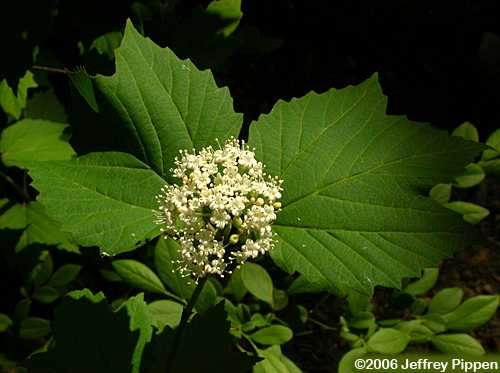 |
Mapleleaf Viburnum (Viburnum acerifolium)
Orange Co., NC
6 May 2006Statewide and common in NC in various wooded habitats. |
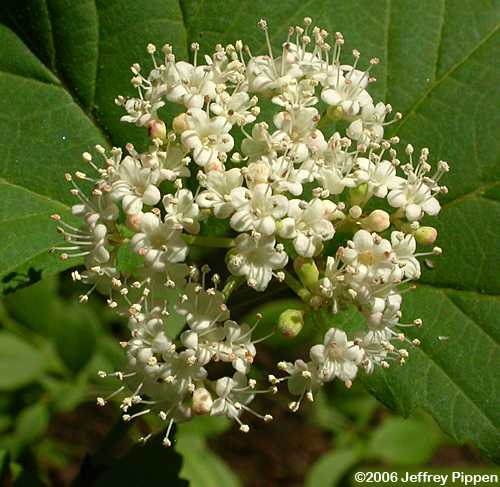 |
Mapleleaf Viburnum (Viburnum acerifolium)
Orange Co., NC
6 May 2006 |
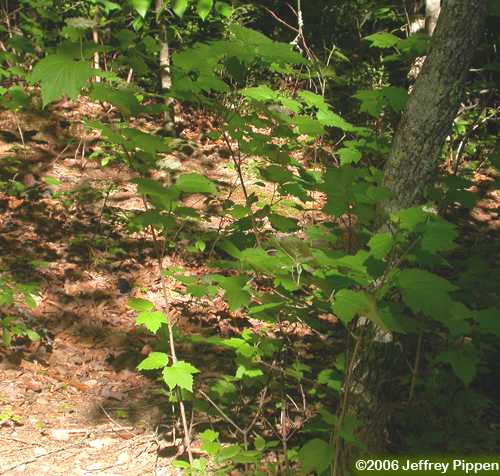 |
Mapleleaf Viburnum (Viburnum acerifolium)
Orange Co., NC
6 May 2006The leaves are so maple-like, that the plants can look somewhat like maple saplings. |
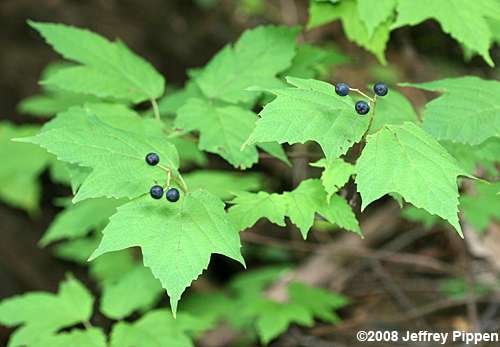 |
Mapleleaf Viburnum (Viburnum acerifolium)
McDowell Co., NC
13 Sep 2008Blue-black fruits develop in late summer. |
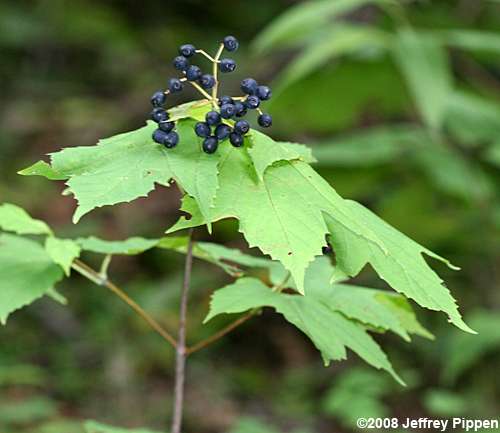 |
Mapleleaf Viburnum (Viburnum acerifolium)
McDowell Co., NC
13 Sep 2008 |
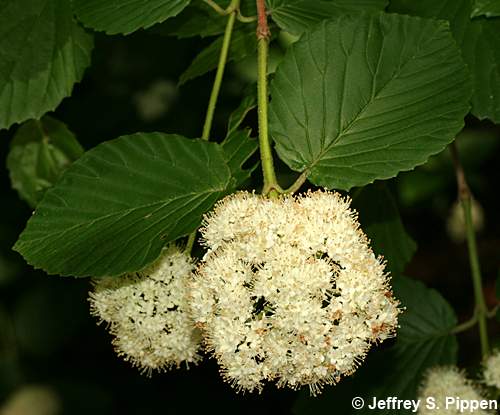 |
Southern Arrowwood (Viburnum dentatum)
Planted specimen in Duke Gardens, Durham Co., NC
30 May 2013Widespread and somewhat uncommon in NC. |
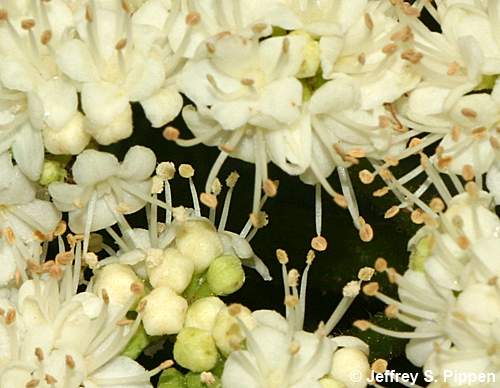 |
Southern Arrowwood (Viburnum dentatum)
Planted specimen in Duke Gardens, Durham Co., NC
30 May 2013Close-up of flower detail |
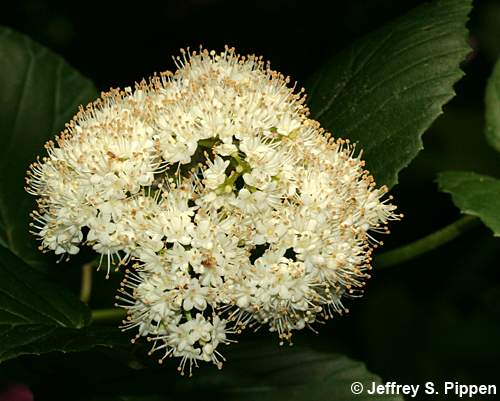 |
Southern Arrowwood (Viburnum dentatum)
Planted specimen in Duke Gardens, Durham Co., NC
30 May 2013 |
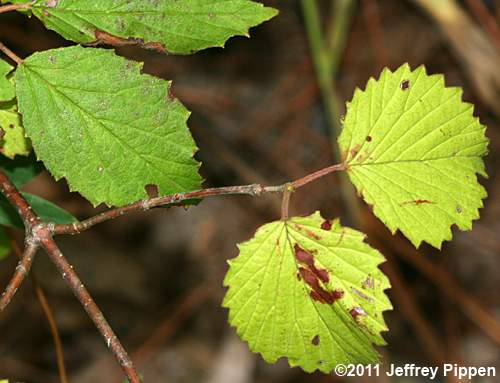 |
Southern Arrowwood (Viburnum dentatum)
Jordan Lake, Chatham Co., NC
2 Oct 2011 |
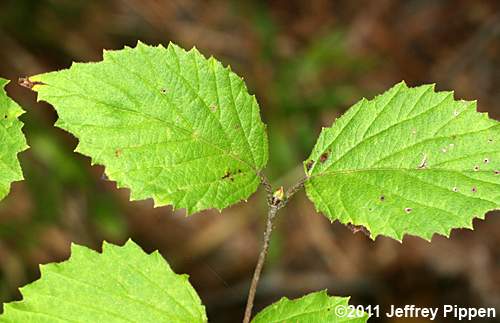 |
Southern Arrowwood (Viburnum dentatum)
Jordan Lake, Chatham Co., NC
2 Oct 2011Leaves are wider-rounder and with longer petioles than the similar Viburnum rafinesquianum. |
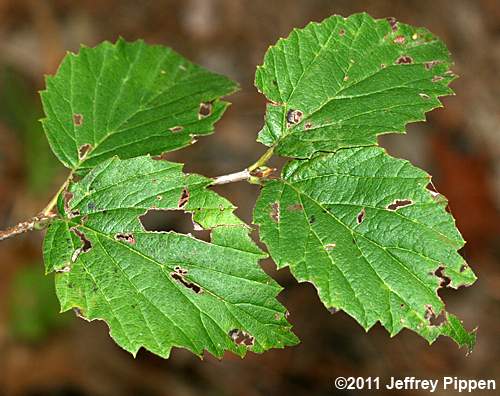 |
Southern Arrowwood (Viburnum dentatum)
Jordan Lake, Chatham Co., NC
2 Oct 2011 |
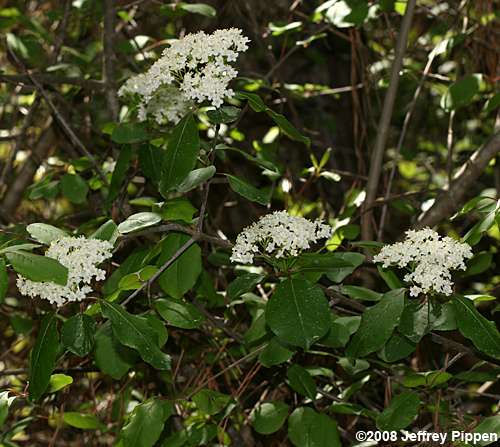 |
Blackhaw, Cherryleaf Viburnum (Viburnum prunifolium)
Orange Co., NC
17 Apr 2008Statewide and common in mesic forest habitats in North Carolina, Blackhaw produces flat-topped clusters of white flowers in the spring. |
 |
Blackhaw, Cherryleaf Viburnum (Viburnum prunifolium)
Orange Co., NC
17 Apr 2008Leaves look similar to cherry leaves, but their arrangement is opposite in Blackhaw. (Cherry trees have alternate leaves.) |
 |
Blackhaw, Cherryleaf Viburnum (Viburnum prunifolium)
Orange Co., NC
17 Apr 2008 |
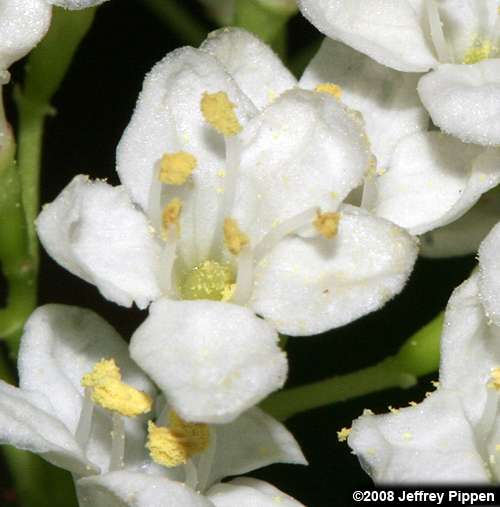 |
Blackhaw, Cherryleaf Viburnum (Viburnum prunifolium)
Orange Co., NC
17 Apr 2008 |
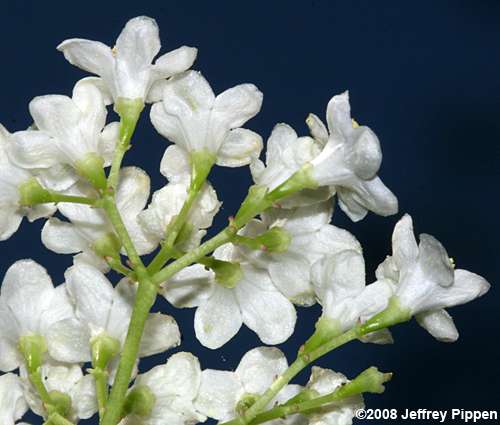 |
Blackhaw, Cherryleaf Viburnum (Viburnum prunifolium)
Orange Co., NC
17 Apr 2008 |
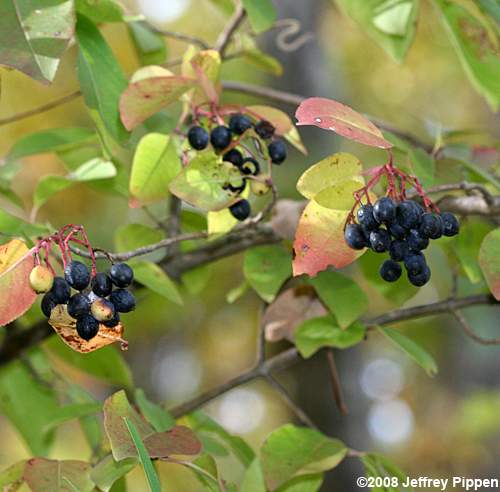 |
Blackhaw, Cherryleaf Viburnum (Viburnum prunifolium)
Orange Co., NC
29 Oct 2008Fruits are nearly black and droop when ripe. |
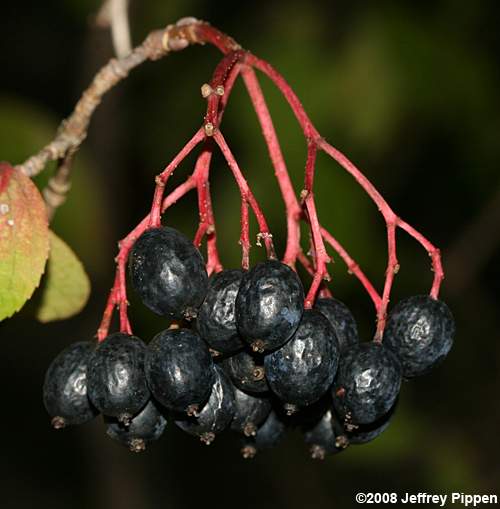 |
Blackhaw, Cherryleaf Viburnum (Viburnum prunifolium)
Orange Co., NC
29 Oct 2008 |
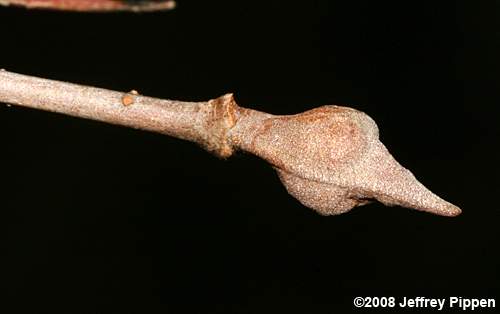 |
Blackhaw, Cherryleaf Viburnum (Viburnum prunifolium)
Orange Co., NC
29 Oct 2008Distinctive buds are swollen in the middle with a goosebeak-like tip. |
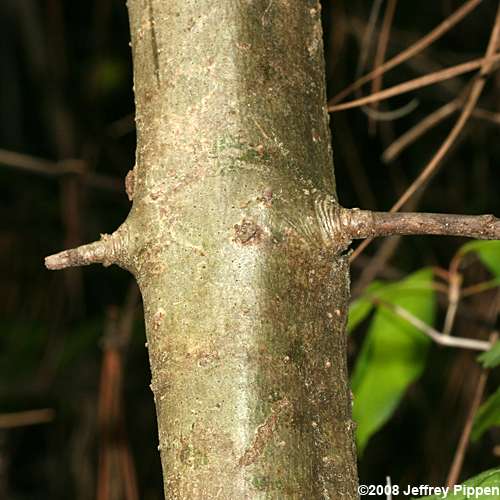 |
Blackhaw, Cherryleaf Viburnum (Viburnum prunifolium)
Orange Co., NC
17 Apr 2008Bark. |
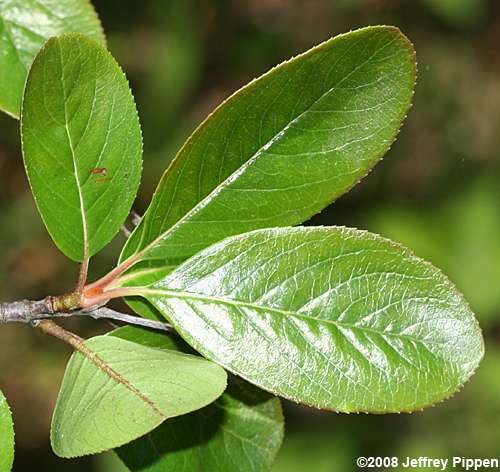 |
Rusty Blackhaw (Viburnum rufidulum)
Edge of field & woods in Orange Co., NC
22 May 2008Statewide and uncommon in North Carolina. Leaves are glossy above and have rusty hairs below, especially on the petiole and under midrib. |
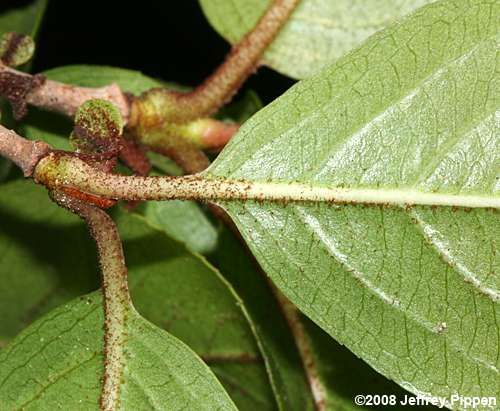 |
Rusty Blackhaw (Viburnum rufidulum)
Edge of field & woods in Orange Co., NC
22 May 2008Similar to Viburnum prunifolium (above species) but with distinct rusty hairs, which V. prunifolium lacks. |
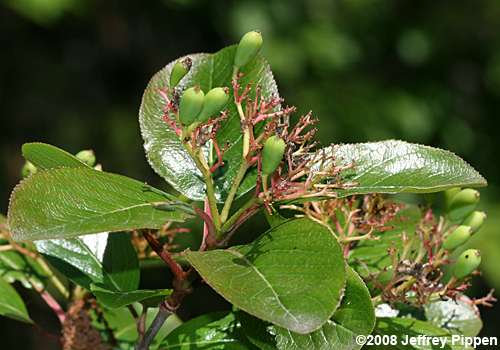 |
Rusty Blackhaw (Viburnum rufidulum)
Edge of field & woods in Orange Co., NC
22 May 2008Flat-topped white flower clusters appear in spring and fruits ripen over the summer. |
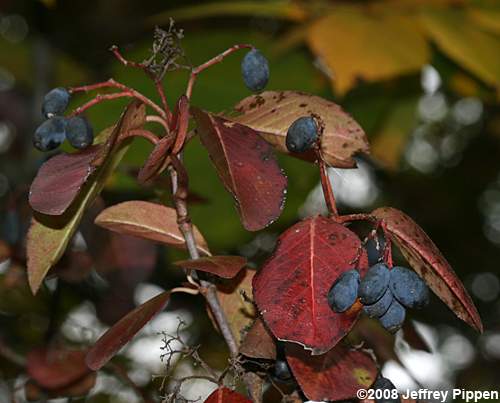 |
Rusty Blackhaw (Viburnum rufidulum)
Edge of field & woods in Orange Co., NC
29 Oct 2008Leaves turn red in the fall and fruits become nearly black. |
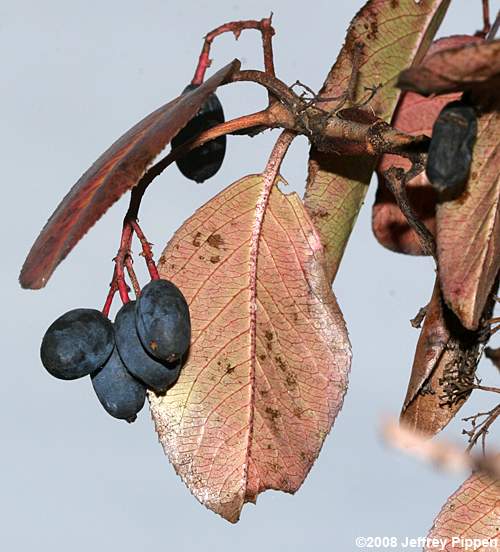 |
Rusty Blackhaw (Viburnum rufidulum)
Edge of field & woods in Orange Co., NC
29 Oct 2008Ripe fruits are heavy and could therefore be called drooping drupes. |
 |
Rusty Blackhaw (Viburnum rufidulum)
Edge of field & woods in Orange Co., NC
29 Oct 2008Distinct buds are rusty and fuzzy. |
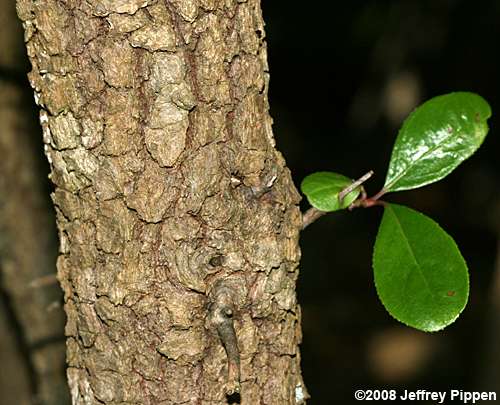 |
Rusty Blackhaw (Viburnum rufidulum)
Edge of field & woods in Orange Co., NC
22 May 2008Chunky blocky bark. |
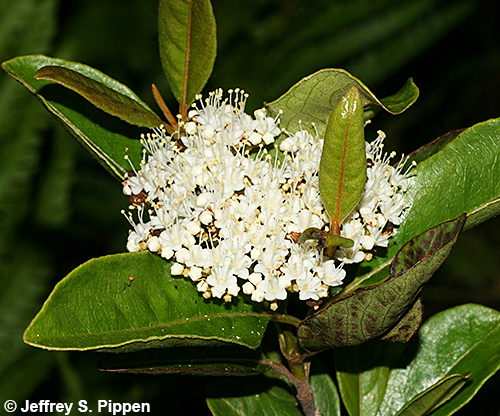 |
Possumhaw Viburnum, Southern Wild Raisin (Viburnum nudum)
Brunswick Co., NC
16 May 2007 |
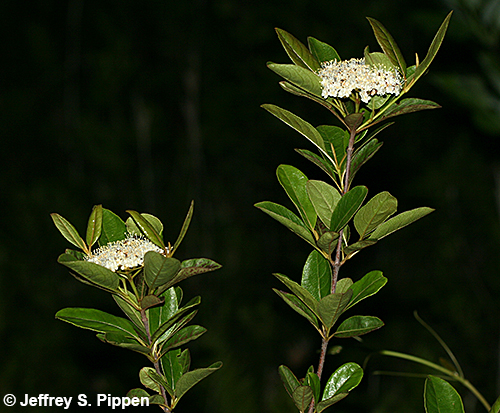 |
Possumhaw Viburnum, Southern Wild Raisin (Viburnum nudum)
Brunswick Co., NC
16 May 2007 |
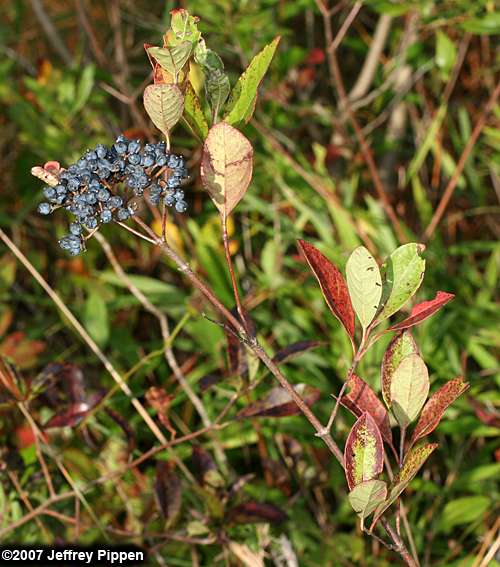 |
Possumhaw Viburnum, Southern Wild Raisin (Viburnum nudum)
Craven Co., NC
21 Oct 2007Statewide in North Carolina, but common only in the eastern half, Possumhaw grows in a variety of habitats with wet soils. |
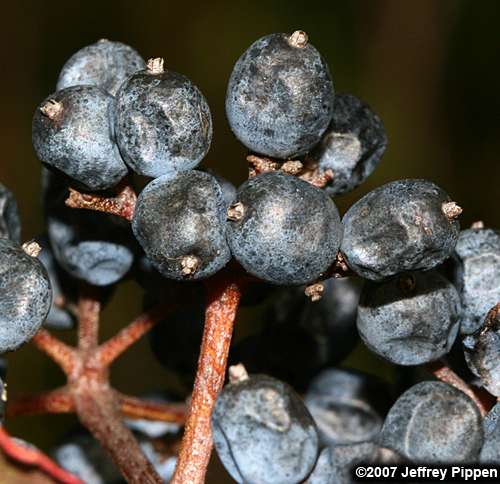 |
Possumhaw Viburnum, Southern Wild Raisin (Viburnum nudum)
Craven Co., NC
21 Oct 2007Possumhaw flowers in the spring and fruits (drupes) ripen in the fall. |
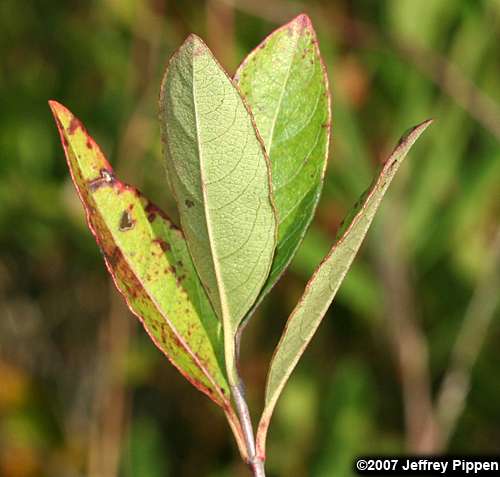 |
Possumhaw Viburnum, Southern Wild Raisin (Viburnum nudum)
Craven Co., NC
21 Oct 2007Leaves are shiny with entire (untoothed) margins. |
Annotated habitat and distribution information listed above is from Radford, Ahles, & Bell. 1968. Manual of the Vascular Flora of the Carolinas. UNC Press; Alan Weakley's Flora of the Carolinas, Virginia, and Georgia; and from personal observations and discussions with Will Cook, Harry LeGrand, and Bob Wilbur. Supplemental resources include USDA plants website, and NatureServe.
































